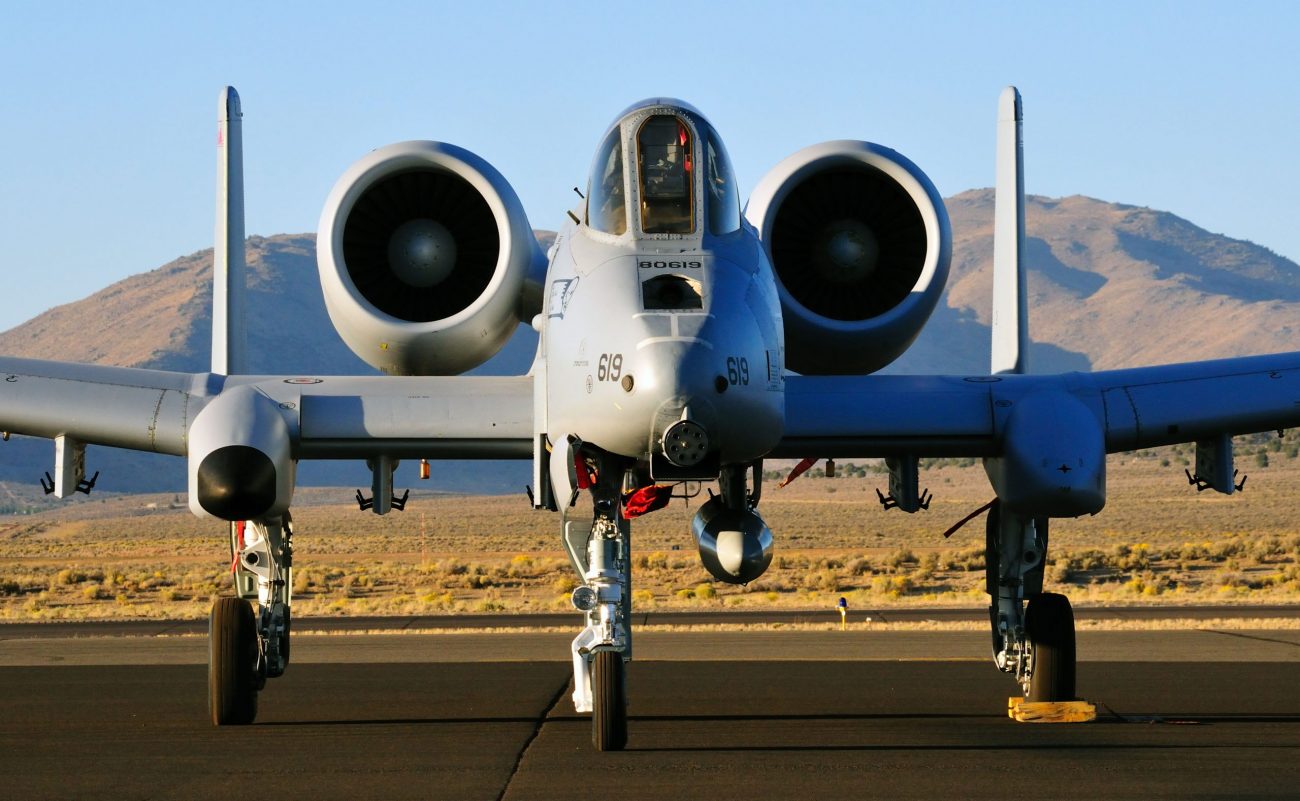U.S. May Retire Entire A-10 Warthog Fleet By 2026; Can Pentagon Give These ‘Tank Buster’ Aircraft To Taiwan Instead?

The US Air Force (USAF) is planning to retire its entire fleet of A-10 Warthog aircraft by 2026, two years ahead of schedule, after distinguished service spanning over four decades during which the fighter jet, also known as ‘tankbuster,’ took part in numerous conflicts, including the Gulf War, Afghanistan, Iraq and Syria.
The USAF plans to retire its final 162 Fairchild Republic A-10 Warthog attack jets by the end of Fiscal Year 2026. In total, the USAF plans to retire as many as 340 aircraft in FY 2026, an ambitious retirement plan that is by far the largest for the USAF fleet in recent years.
However, intriguingly, the extensive retirement list does not include the F-22 Raptors, roughly 32 of which the Air Force has tried to retire in recent years due to concerns that they are not combat-capable. This means that the USAF’s stealthy air-superiority fighter will remain in service for at least a few more years.
The 2026 spending package includes a request for US$57 million to retire all 162 remaining A-10 Warthog fighter jets. The USAF is also planning to retire 62 F-16Cs and Ds, 21 F-15Es, 13 F-15Cs and Ds, 14 C-130H Hercules cargo planes, 3 EC-130H Compass Call electronic warfare planes, 14 KC-135 Stratotankers, 11 HH-60G combat rescue helicopters, 35 T-1 Texan trainers, 4 UH-1N helicopters, and a B-1 Lancer.
However, nearly half of the planned retirement list of 340 aircraft consists of A-10 Warthogs. This legacy fighter jet, which has been part of almost every major US conflict since the 1980s, will soon become history.
The news of the planned retirement of A-10 Warthogs is received with a sense of nostalgia in the aviation community.

According to many aviation enthusiasts, the A-10 Warthog is the last fighter jet designed to look like a true beast. As this storied aircraft inches closer to retirement, we take a look at its capabilities and combat history.
A-10 Warthogs
A-10s For Taiwan?
As the news of the planned retirement of A-10s broke, an opinion piece in Asia Times suggested that instead of sending these planes to rust in the boneyard at Davis Monthan Airbase in Tucson, Arizona, the USAF should give these warplanes to Taiwan, as they can play a critical role in a potential invasion by China.
“Sending them to the scrap heap would be a massive mistake. Better to send them to Taiwan, where they could make a major contribution to defending the island,” it said.
The A-10s could play an important role in sinking invading Chinese naval fleets due to their exceptional ground attack capabilities. Furthermore, the A-10s are more sturdy and survivable than any jet in the Taiwan Air Force’s inventory.
“With F-16s challenging China’s air arm, the A-10 can sink an invasion fleet and do so quickly,” it said.
Notably, in its later years, the USAF was also using the A-10s in maritime roles.
In 2011, these aircraft engaged in targeted strikes against small boats in Libya, and in 2016, they conducted surveillance missions over the South China Sea.
Furthermore, an exercise in 2017 witnessed A-10 planes engaging in simulated attack maneuvers against small boats resembling the fast vessels commonly utilized by the Iranian Revolutionary Guard Corps Navy.
These instances underscored the adaptability and multi-faceted capabilities of the A-10 in various operational contexts.
Another potential application is their use in shooting down aerial drones, as their slower flight speed could offer a tactical advantage in such scenarios. Due to these reasons, the A-10s can still play a crucial role in defending Taiwan.
F-22 Raptor Will Continue Roaring
The U.S. Air Force has ambitious plans to retire 340 aircraft in Fiscal Year 2026. However, the proposed retirement list does not include Block 20 F-22A Raptors, roughly 32 of which the Air Force has tried to retire in recent years due to concerns that they are not combat-capable.

The Block 20s were primarily designed for training purposes and were not combat-coded.
Regarding this batch of older F-22s, LTG Richard Moore has stated, “They will never be a part of the combat force.”
The planes’ annual operational cost is US$485 million, which translates to around US$15 million per jet annually. So, the USAF could save $500 million a year by retiring them.
However, for now, the USAF has resisted the urge to retire these Raptors. It remains to be seen if the USAF has planned a new role for them.
- Questions and Answers
- Opinion
- Motivational and Inspiring Story
- Technology
- Live and Let live
- Focus
- Geopolitics
- Military-Arms/Equipment
- Безопасность
- Economy
- Beasts of Nations
- Machine Tools-The “Mother Industry”
- Art
- Causes
- Crafts
- Dance
- Drinks
- Film/Movie
- Fitness
- Food
- Игры
- Gardening
- Health
- Главная
- Literature
- Music
- Networking
- Другое
- Party
- Religion
- Shopping
- Sports
- Theater
- Health and Wellness
- News
- Culture

